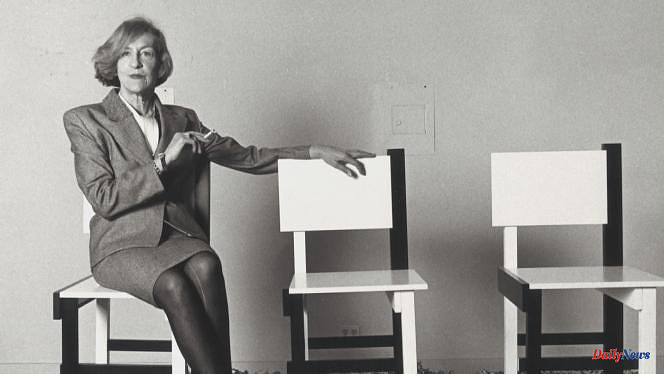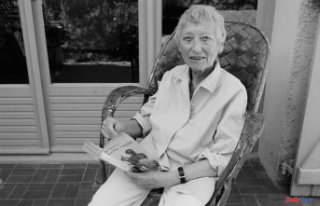Gabrielle Chanel (1883-1971), the great seamstress, would have foreseen the logo of her brand in the graphic interlacing of the stained glass windows of the Cistercian abbey of Aubazine (Corrèze); Andrée Putman (1925-2013), "the great lady of design", as the title of the new documentary dedicated to her calls her, would have found the beginnings of her famous black and white elements in the piano keyboard (which she practiced at a high level) and in the clean lines of the Abbey of Fontenay (Côte-d'Or), a family property.
Rebellious and apart, this elegant woman gave up music, her mother's passion, became a journalist and then a stylist at Prisunic, in 1958, before joining and founding design and consulting firms. She reinvented herself again at 53, after a painful divorce from collector Jacques Putman (1926-1994).
In 1978, she founded the company Ecart International, which was first dedicated to the reissue of Art Deco furniture that she loved so much and that she was one of the first to bring back to the fore, if not up to date, before embarking on interior design and decoration.
Endowed with an impeccable eye and taste, but a self-taught designer and architect, Andrée Putman put her freedom and her audacity on this account, which was not bothered with presuppositions and knowledge. She took strong sides, designed shops and official buildings, furnished and refurbished the Musée d'art contemporain de Bordeaux, decorated houses and hotels – including the emblematic Morgans, in New York, which, in 1984 , launched the vogue for boutique hotels and his international career.
Le desk de Jack Lang
On the occasion of the 10th anniversary of the death of Andrée Putman, the excellent and rich documentary by Saléha Gherdane examines the life and work of the designer, commented on by relatives, specialists and her daughter, Olivia Putman, who took over, in 2007, the design studio that bears the name of his mother.
But we can regret that a fundamental question has not been asked: was she the equal of Eileen Gray (1878-1976), whom she republished, or of Charlotte Perriand (1903-1999), two great designers and architects of Parisian interior (Gray was Irish), the name of which immediately comes to mind for anyone with the slightest interest in design?
The first is immediately associated with the famous E-1027 Adjustable Table (transparent circular top and steel tube structure); at the second his sliding chaise longue (long attributed to Le Corbusier, with whom Perriand collaborated) or his simple three-legged stool, known as "Méribel".
The name and posterity of Andrée Putman do not seem, on the other hand, to be attached to a piece of furniture or a particular object, apart, perhaps, from Jack Lang's desk at the Ministry of Culture – he will have marked the spirits, but it must be admitted that not much distinguishes it from the Art Deco heritage.
Counter-image
However, great lady of design, Andrée Putman was undeniably so by fixing a counter-image of the 1980s: while the New York hotels decorated by Philippe Starck from 1988 were only going to be theater, colors, expressive and baroque forms , Andrée Putman (to whom her colleague pays homage in the documentary) imposed, four years earlier, a radiant neutrality at the Morgans, with, in particular, its famous bathrooms with black and white tiled walls in an ordinary material, and this whom she called "non-colors".
Many of these arrangements were destroyed and redone by others and for other uses, but what remains of Andrée Putman remains marked by an elegance that seems timeless, if the qualifier was not a little overused. . But what chic she knew how to put both in the design of a grand luxurious staircase and in that of the cardboard napkin rings for the Concorde, an airplane whose interior and everyday objects she redesigned.
Comparable in this to Eileen Gray and Charlotte Perriand, Andrée Putman, a party girl who never lost her countenance, was also a social designer. For Prisunic, she perfectly embodied the famous, insolent and brilliant slogan: "The beautiful at the price of the ugly." Which didn't stop him from working for the rich and famous.
So with Bernard-Henri Lévy, whose villa she designed in Tangier. As Olivia Putman returns to the scene, we are like her, blown away and moved by the accuracy of the layout, which only seems there to magnify the breathtaking view of Gibraltar. And we say to ourselves, despite the price at which the villa was sold in 2017 (starting price of 6 million euros), that Andrée Putman was telling the truth when she said about her memorable style: "The interiors the most successful are those where you don't notice the originality, but where you just have the feeling of feeling good about it. »












